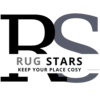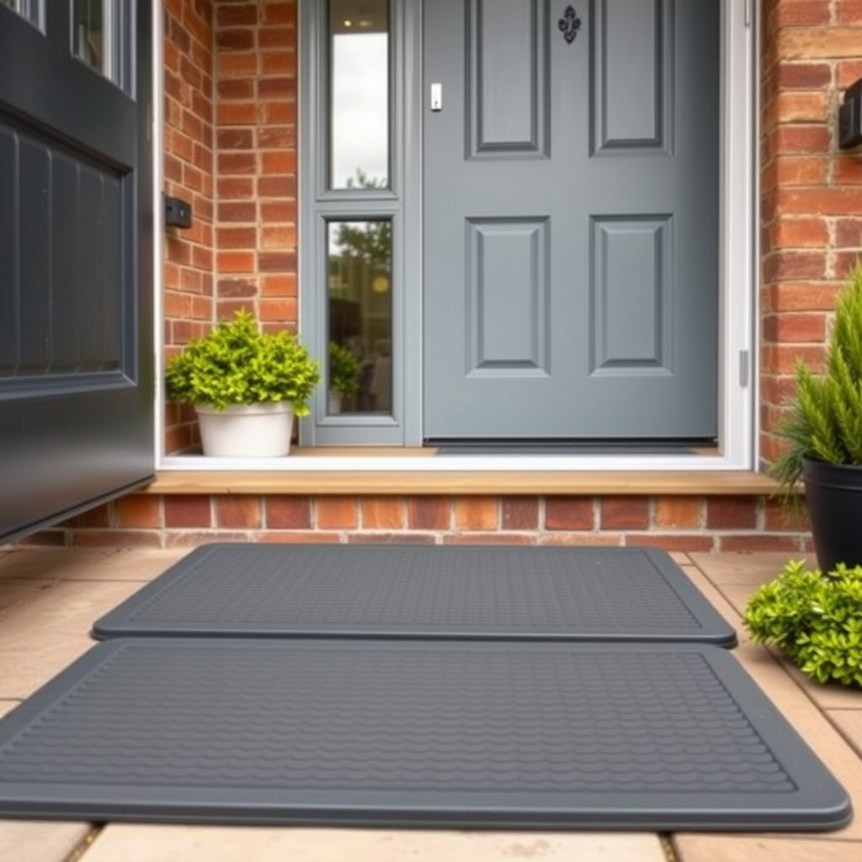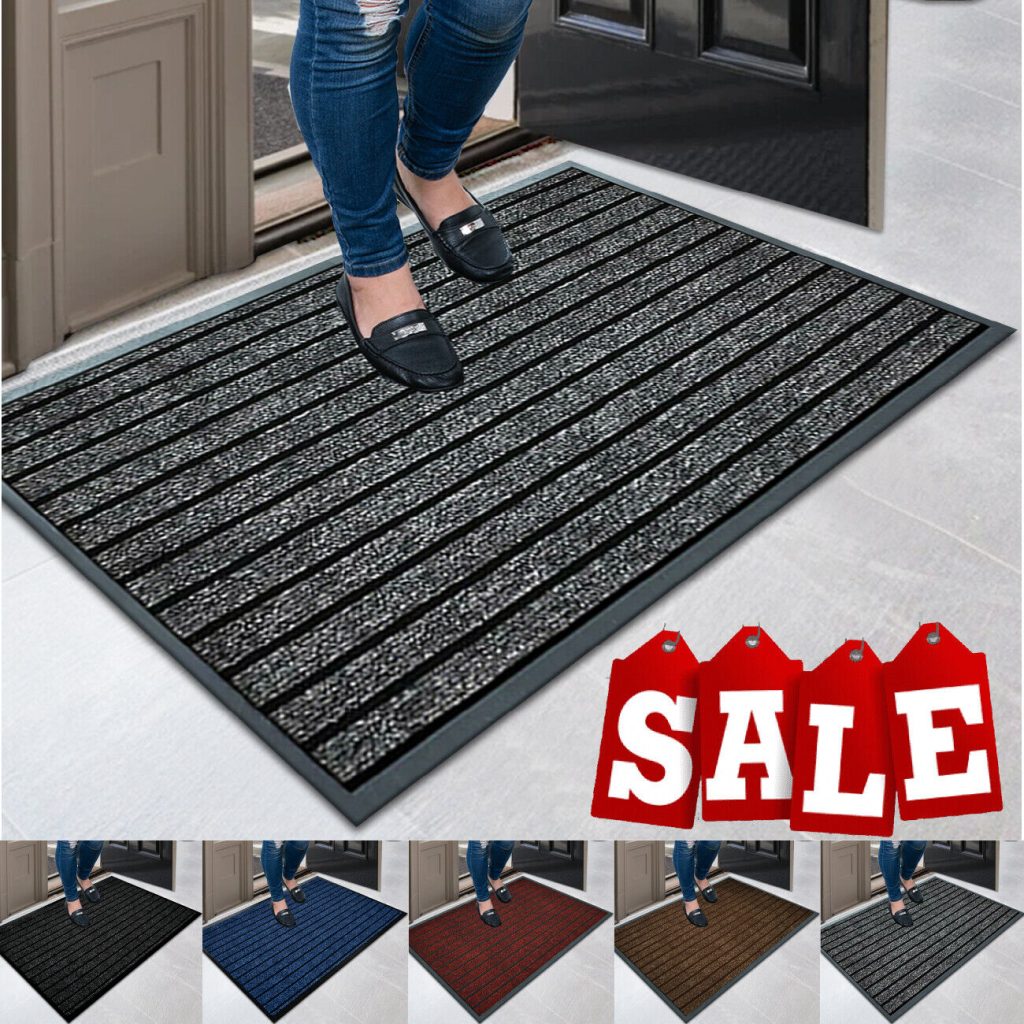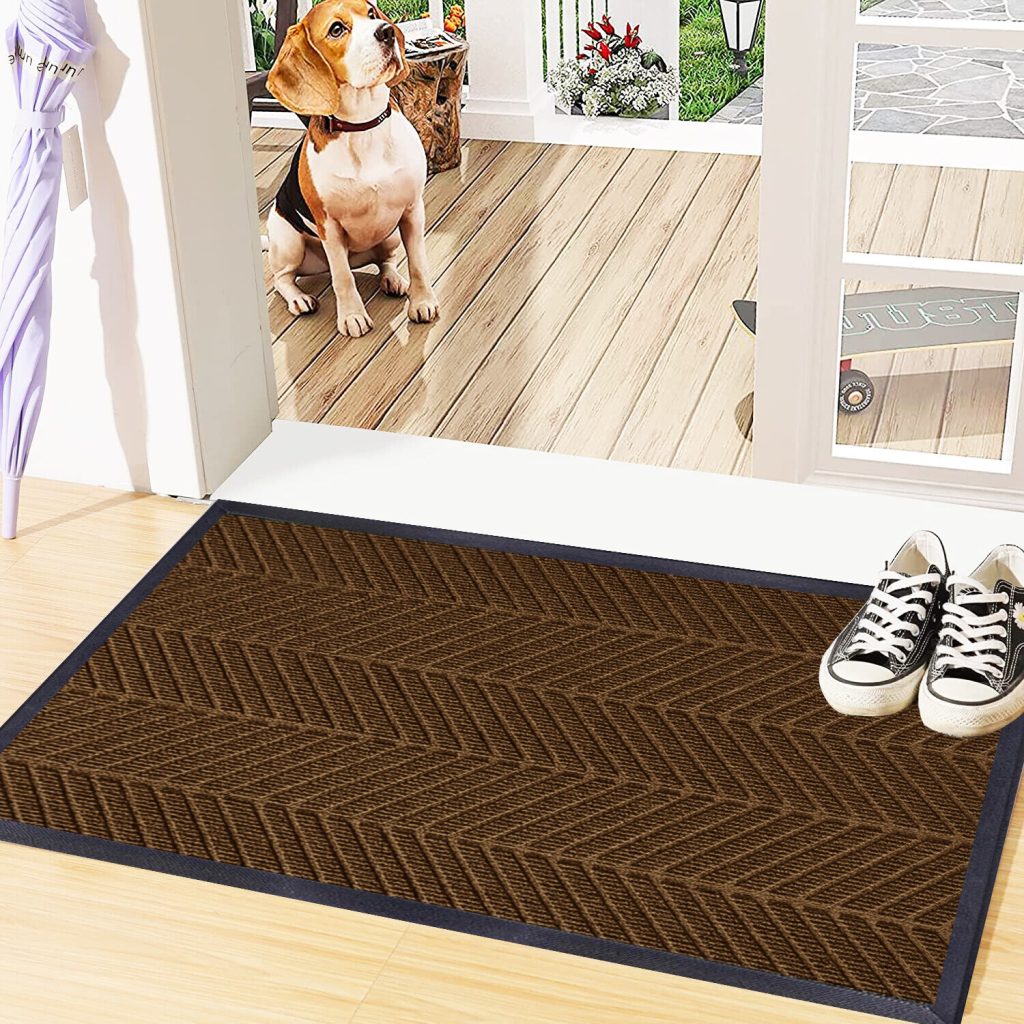Choosing the right outdoor mat for your UK home is more than just a matter of aesthetics; it’s about practical resilience against the unpredictable British weather. From persistent rain and high humidity to cold temperatures and occasional frost, these elements directly impact a mat’s durability, appearance, and critical functionality. Ignoring these challenges can lead to rapid deterioration, mold growth, and even safety hazards.
The material of your outdoor mat fundamentally dictates its ability to withstand these stresses. A durable, weather-resistant mat will maintain its look, grip, and effectiveness for far longer, ensuring safety and cleanliness at your doorstep. Conversely, an unsuitable material might quickly warp, crack, or lose its vital slip resistance. This guide will help you navigate the common choices and select a mat that balances resilience, aesthetics, and safety, perfectly suited for the UK’s often wet and chilly environment.
Common Outdoor Mat Materials Explained
Understanding the properties of various outdoor mat materials is crucial for making an informed decision, especially when factoring in the specific climate challenges of the UK.
Coir Mats
Derived from the fibrous husks of coconuts, coir mats offer a distinct natural and rustic appeal. They are excellent at scraping mud and dirt from footwear, making them a popular traditional choice for entryways. However, their organic composition makes them highly susceptible to moisture-related issues. In the UK’s damp climate, coir mats are prone to absorbing water, which promotes rapid mold and mildew growth. This not only leads to unsightly discoloration but also accelerates the breakdown of the fibres, significantly reducing the mat’s lifespan and effectiveness over time.
Rubber Mats
Rubber mats are engineered for performance and durability, making them exceptionally well-suited for outdoor use in the UK. Their designs often feature perforations or grooves that facilitate excellent water drainage, preventing pooling and reducing slip hazards. Rubber’s inherent resilience allows it to withstand significant temperature fluctuations; it remains pliable and does not become brittle or crack even in freezing conditions. Furthermore, rubber maintains superior slip resistance when wet, a critical safety feature. These mats are remarkably low-maintenance, easy to clean, and built to last, making them ideal for high-traffic areas and heavy-duty use.
Synthetic Fibre Mats
Typically made from advanced synthetic polymers like polypropylene or polyester, these mats offer a blend of robust weatherproofing and design flexibility. Synthetic fibres are engineered to resist moisture absorption, meaning they dry quickly after rain. They maintain their structural integrity and vibrant colours even in freezing temperatures or under prolonged UV exposure. Available in a wide array of styles, patterns, and colours, synthetic mats can effortlessly complement modern exterior aesthetics, providing both functionality and contemporary appeal.
Hybrid Coir-Rubber Mats
These innovative mats combine the natural charm of coir fibres with the enhanced durability of a rubber backing or frame. The blend aims to merge the effective scraping ability of coir with improved stability and moisture management. While they are generally better at handling damp conditions than pure coir mats, the coir component still makes them vulnerable to mold and mildew if consistently wet. They can also be less flexible than pure rubber or synthetic options. Regular cleaning and attention are necessary to maintain their performance and appearance over time, ensuring they effectively serve their dual purpose.
Practical Benefits of Rubber and Synthetic Mats for UK Homes
When considering the often-challenging UK weather, the practical advantages of rubber and synthetic mats become clear. Their superior design and material properties directly address the common issues faced by outdoor mats, providing long-term benefits for homeowners.
Rubber Mats: Engineered for UK Weather
Rubber mats are exceptionally well-suited for UK homes that contend with frequent rainfall, dampness, and intermittent frosts. Their design, often featuring open or perforated patterns, ensures excellent drainage, preventing water from stagnating on or under the mat. This not only reduces common slip hazards on wet surfaces but also prevents the mat from degrading due to constant moisture exposure. A key advantage of rubber is its ability to remain pliable and flexible even in very cold weather, eliminating the risk of cracking or becoming brittle—a common issue with inferior materials or those not designed for temperature extremes. This durability ensures a consistent, reliable performance year-round.
Synthetic Mats: Combining Lightness and Longevity
Synthetic mats, typically made from polypropylene or polyester, bring additional benefits of lightness and ease of maintenance. Their non-absorbent fibres mean they dry quickly after rain, preventing the growth of mold and mildew. Cleaning is a breeze: they can be easily hosed down or shaken out to remove dirt and debris. Many synthetic mats also incorporate UV-resistant pigments, which are crucial for maintaining their vibrant colours and aesthetic appeal despite prolonged sun exposure, even on cloudy UK days. Their versatility in design, available in sleek patterns and muted shades, allows them to seamlessly integrate with contemporary outdoor designs, providing a modern and functional entrance solution.
Drawbacks and Considerations When Choosing Coir and Hybrid Mats
While coir and coir-rubber hybrid mats offer a certain aesthetic appeal, it’s crucial for UK homeowners to be aware of their inherent drawbacks, particularly in a climate known for its moisture.
Traditional Coir Mats: High Maintenance in Damp Climates
Traditional coir mats, due to their natural, absorbent fibres, require careful consideration regarding placement and maintenance in the UK. They are highly prone to soaking up moisture, which, in the consistently damp British climate, inevitably leads to the rapid development of mold, mildew, and general fibre breakdown. To extend their lifespan, coir mats necessitate strategic placement—ideally under sheltered areas like deep porches or awnings that offer significant protection from direct rain. Regular drying and frequent cleaning are essential. Despite diligent upkeep, they may still experience gradual wear and a diminished appearance over time compared to more weather-resistant alternatives.
Coir-Rubber Hybrids: A Step Up, But Still Demanding
Coir-rubber hybrid mats aim to bridge the gap between natural aesthetics and enhanced durability by incorporating a rubber backing or frame. While this design does offer some improvement in resilience against moisture and provides better stability, the coir element still means they are not entirely immune to damp-related issues. They require more upkeep than fully synthetic or rubber mats and can be less forgiving in scenarios of prolonged freezing temperatures or continuous heavy rain. Furthermore, hybrid mats often come with a higher price tag than pure coir or even many synthetic options. This higher initial cost, combined with the ongoing need for maintenance and their potentially shorter lifespan in harsh conditions, can impact their overall cost-effectiveness compared to more robust, lower-maintenance alternatives like solid rubber or synthetic fibre mats.
Ultimately, when selecting an outdoor mat, homeowners should carefully weigh the initial rustic charm and aesthetic appeal of coir and hybrid options against the longer-term durability, superior performance, and significantly lower maintenance requirements of rubber or synthetic fibre mats, especially given the specific climatic conditions of the UK.
Comparing Outdoor Mat Materials: Drainage, Durability, and Weather Resistance
This comprehensive table provides a clear side-by-side comparison of the common outdoor mat materials, highlighting their performance across key factors crucial for the UK climate.
| Feature | Coir | Rubber | Synthetic Fibres | Coir-Rubber Hybrid |
|---|---|---|---|---|
| Water Drainage | Poor | Excellent | Good | Improved vs. Coir |
| Mold & Mildew Resistance | Low | High | High | Moderate |
| Durability in Cold | Low | High | High | Moderate |
| Maintenance Required | High | Low | Low | Moderate |
| Appearance | Natural, rustic | Functional, solid colours | Stylish, versatile | Natural with enhanced grip |
| Cost | Low to Moderate | Moderate | Moderate | High |
| UK Climate Suitability | Limited (dry, sheltered) | Excellent | Excellent | Suitable with care |
As this table clearly illustrates, rubber and synthetic mats consistently provide optimal performance in typical UK outdoor environments. They combine superior durability, enhanced safety features like excellent drainage and slip resistance, and remarkable ease of maintenance, making them the most practical and reliable choices for variable British weather conditions.
Tips for Maximizing Outdoor Mat Lifespan and Performance
Even with the most durable materials, proper care and placement can significantly extend the life and performance of your outdoor mat, ensuring it continues to protect your home effectively.
Proper Placement
Strategic positioning is key to protecting your mat from the harshest elements. Always try to position your outdoor mats under sheltered areas such as porches, awnings, or deep eaves. This significantly reduces direct exposure to heavy rainfall and harsh sunlight, which can cause premature wear. Where possible, slightly elevate the mat using a simple grid or stand to enhance airflow underneath. This prevents moisture from accumulating, which is crucial for inhibiting mold and mildew growth, even on more resistant materials.
Regular Cleaning
Routine cleaning is essential for all types of outdoor mats. For robust rubber and synthetic mats, a simple hose down or a quick wipe with a damp cloth is usually sufficient to remove accumulated dirt, leaves, and debris. This also helps prevent the growth of stubborn algae or moss, especially in shaded, damp areas. For coir mats, which are more delicate, regular shaking out of loose dirt and occasional light brushing with a stiff brush will help maintain their appearance and scraping efficiency.
Thorough Drying
After rainfall or cleaning, always allow your mats to dry fully before placing them back on the ground. Avoid leaving mats on continuously wet surfaces for extended periods, as this can trap moisture and create an ideal environment for microbial growth or material degradation. Periodically rotating your mats, especially if one area experiences more wear or exposure, can also help to evenly distribute stress and prolong the mat’s overall lifespan.
Seasonal Care
Adapt your mat care to the changing seasons. If you own a coir mat, consider storing it indoors during prolonged wet periods or throughout the winter months to protect it from excessive moisture and freezing temperatures, which can severely damage its natural fibres. While rubber and synthetic mats are designed to be left outdoors year-round, it’s still advisable to monitor them regularly for any signs of damage or excessive wear, particularly after severe weather events. A quick check can prevent minor issues from becoming major problems.
Avoid Harsh Chemicals
When cleaning your outdoor mats, always opt for mild detergents and avoid harsh chemicals such as bleach or strong solvents. These aggressive cleaning agents can degrade the fibres of synthetic and coir mats, and can also compromise the integrity and flexibility of rubber materials, leading to premature cracking or discolouration. Gentle cleaning methods are always the best approach to preserve your mat’s quality and extend its service life.
Recommended Outdoor Mat Choices for UK Weather Conditions
For optimal practical performance, longevity, and overall value in the challenging UK climate, the expert recommendation unequivocally prioritises rubber and synthetic fibre mats. These materials consistently prove superior due to their exceptional water drainage capabilities, robust weather resistance against rain and frost, and significantly lower maintenance requirements, making them perfectly suited for the variable British weather patterns.
While coir mats offer a unique aesthetic charm and excellent scraping ability, they demand cautious, sheltered use and considerably more upkeep to withstand the damp UK conditions. They are best reserved for very well-protected areas where consistent moisture is not a concern.
For homeowners seeking reliability and enduring quality, consider exploring Rugstars UK’s comprehensive range of outdoor mats. Our selection features robust, highly durable, and non-slip options specifically designed to meet the demands of the UK climate, such as our popular Heavy Duty Rubber Mat. At Rugstars, we combine expert support with premium materials to ensure you select outdoor mats that not only enhance your home’s exterior but also effectively endure the British elements for years to come.
Frequently Asked Questions About Outdoor Mats for UK Weather
Q1: What are the best outdoor mat materials for the UK’s weather?
For the UK’s often wet and cold climate, rubber and synthetic fibre mats (like polypropylene or polyester) are highly recommended. They offer superior drainage, excellent resistance to mold and mildew, and maintain their durability and slip resistance in various temperatures, including frost.
Q2: Why are coir mats often not ideal for damp UK climates?
Coir mats, being made from natural coconut fibres, are highly absorbent. In damp UK conditions, they are very susceptible to absorbing moisture, which promotes rapid mold and mildew growth, discoloration, and fibre breakdown, significantly reducing their lifespan and aesthetic appeal.
Q3: How do rubber mats specifically handle UK rain and frost?
Rubber mats are designed with excellent drainage features (perforations or grooves) that prevent water pooling, reducing slip hazards. They also remain pliable and do not crack or become brittle in cold or freezing temperatures, making them highly effective and safe year-round in the UK.
Q4: What maintenance is required for different types of outdoor mats?
Rubber and synthetic mats are low-maintenance; they can be hosed down or wiped clean and dry quickly. Coir mats require more attention, needing regular shaking, light brushing, and careful placement under shelter to avoid constant dampness. All mats benefit from full drying after rain or cleaning and avoiding harsh chemicals.
Q5: Where can I find durable and weather-resistant outdoor mats in the UK?
You can find a wide range of durable and weather-resistant outdoor mats, including high-quality rubber and synthetic options, at reputable UK retailers like Rugstars UK. We offer products specifically designed to withstand the British elements while enhancing your home’s exterior.



